The “Black Mirror” series is an anthology series that explores the relationship between modern society and technology, featuring sharp, suspenseful, and satirical stories that touch on collective unrest with the modern world.
Created by Charlie Brooker, the show first premiered in 2011 and has continued its run on Netflix. Black Mirror, which consists of 7 seasons and 33 episodes in total after the release of its final season on April 10, 2025, is a series that is watched with interest in many parts of the world.
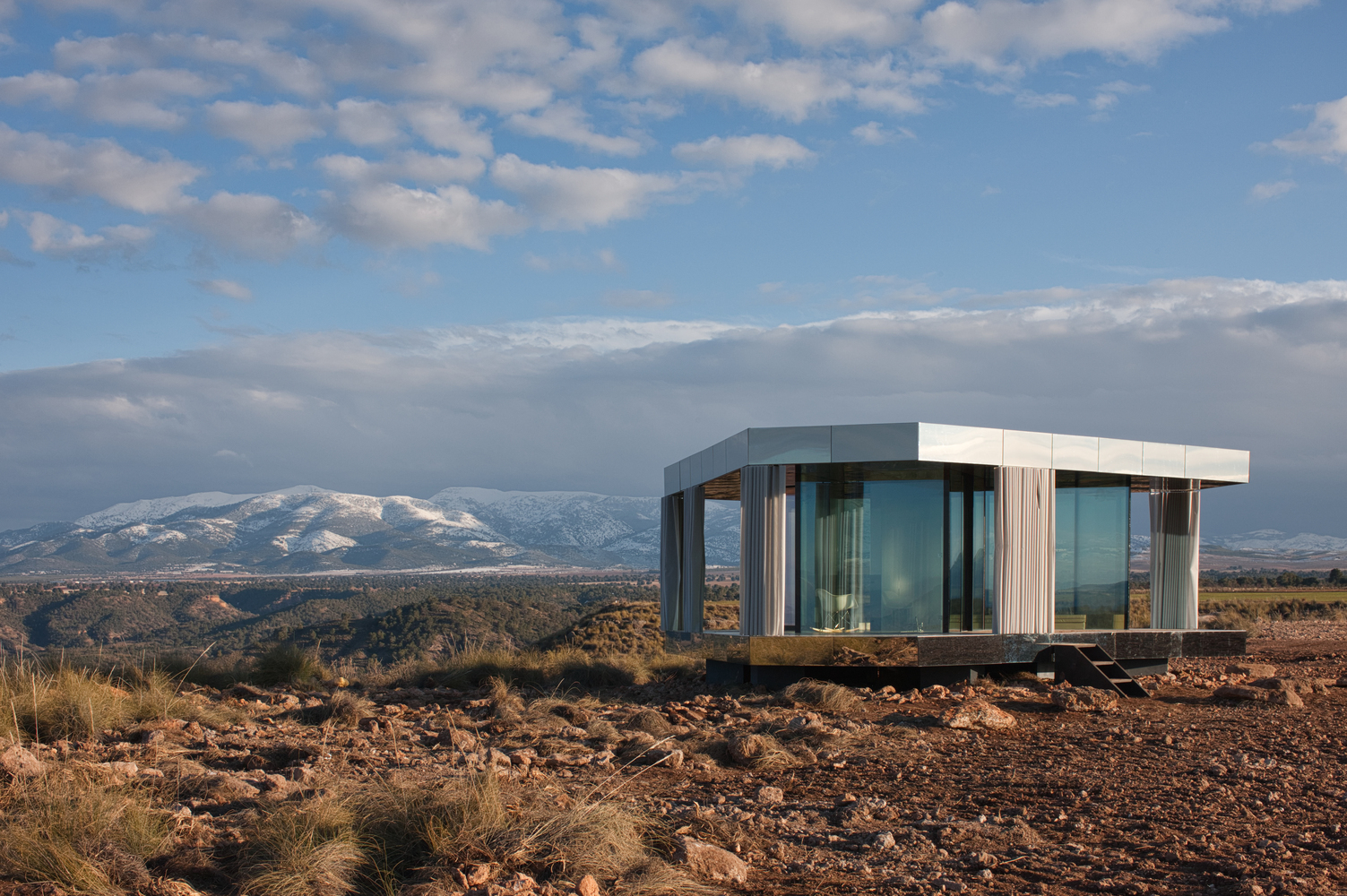
Black Mirror gets its name from the eerie reflection you see on a blank screen, and that’s exactly what the show does: it reflects the dark side of our ever-evolving technology. It explores unique themes, like how technology can reshape our social and moral values, how digitalizing things like taste and social status can affect society, how the line between reality and virtual reality can blur, and how easily technology can be used to manipulate people.
Set in dystopian, hyper-modern worlds, the series shows how technology reshapes not just lives but the very spaces people inhabit. Architecture in these episodes feels cold and artificial, polished, screen-filled, and eerily unreal. Daily life unfolds under constant surveillance, and the spaces, much like the people, become robotic: efficient, controlled, and stripped of soul.
PS: The article contains spoilers for episodes of the series.
Here are 10 dystopian architectures from Black Mirror:
1. Fifteen Million Merits
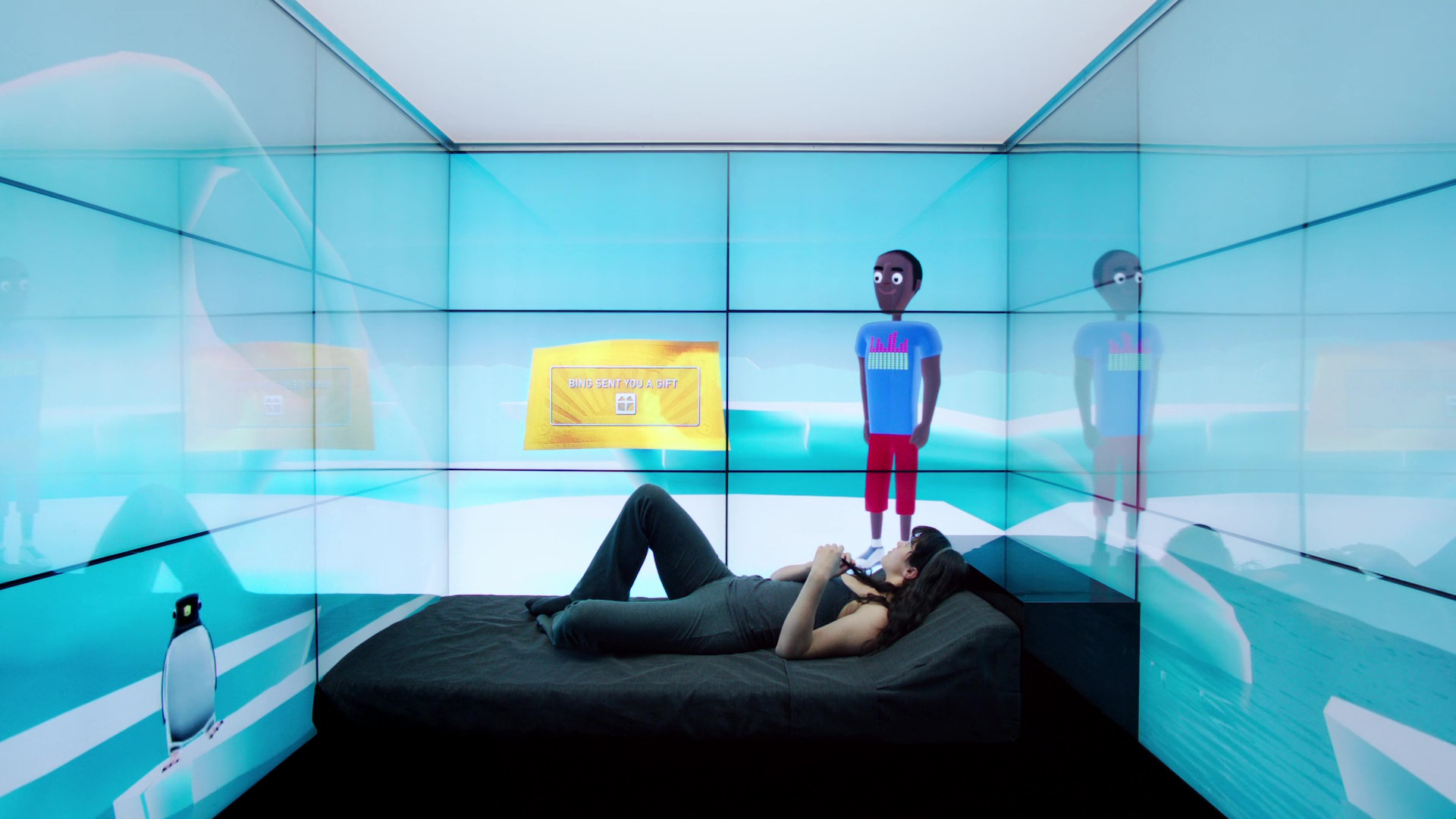
In Black Mirror‘s Fifteen Million Merits, architecture becomes a haunting metaphor for digital captivity. Characters wake each day in claustrophobic cells where every surface, walls, ceiling, and floor, is a screen. With only a bed and a sink, human needs are stripped to their bare essentials, and any connection to the outside world is erased. The cell walls are completely coevered in screens, there is zero connection to the outside world, and no natural light.

This dystopian environment extends into a massive hall where individuals pedal stationary bikes before screens to generate energy and earn virtual currency, embodying an architecture of mechanical repetition, surveillance, and endless consumption. Smart home technology, once meant to serve, now entraps.
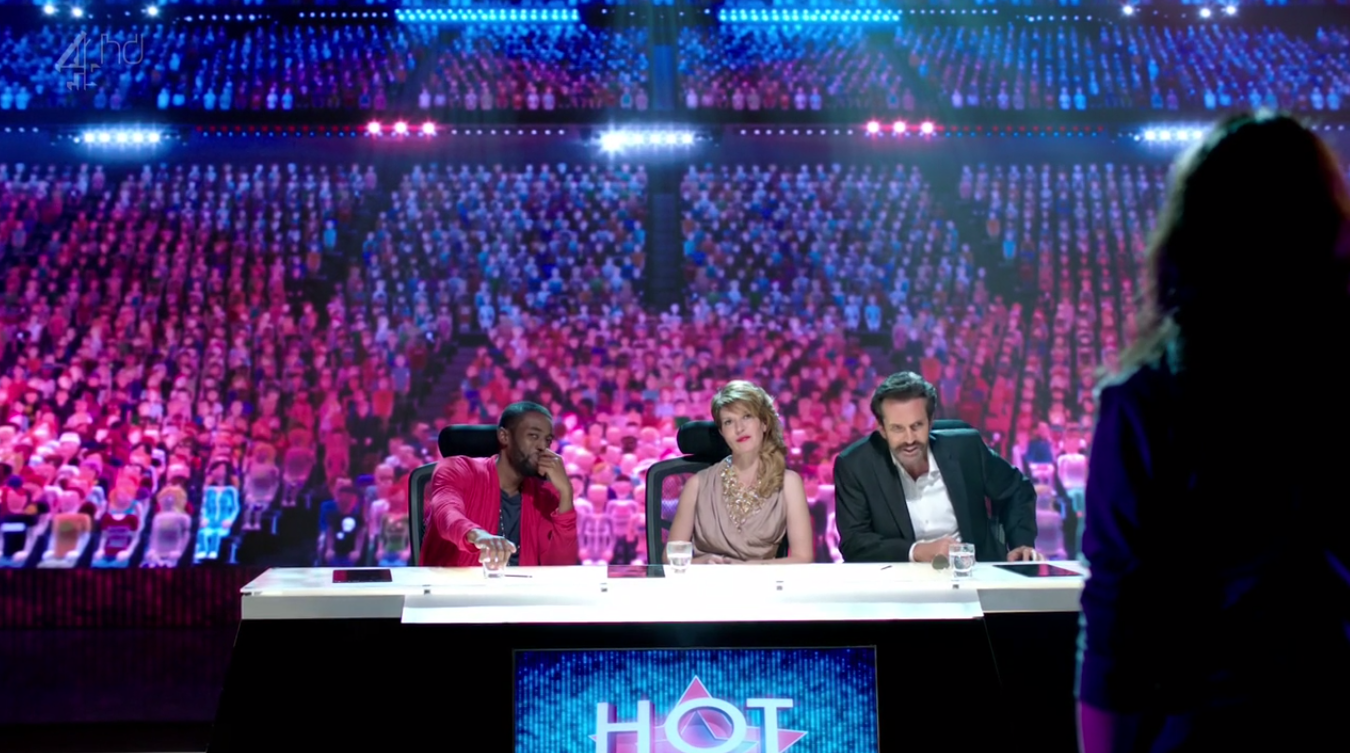
The Fifteen Million Merits episode is an architectural representation of how modern production systems devalue labor. Later in the episode, we see a talent show called “Hot Shot”. Apart from the participants and the jury members, the hall is filled with digital replica audiences. The hall is a raised stage illuminated with dramatic lights. In this dystopian architectural space where reality is replaced by spectacle, there is no boundary between the participant and the consumer.
2. White Bear
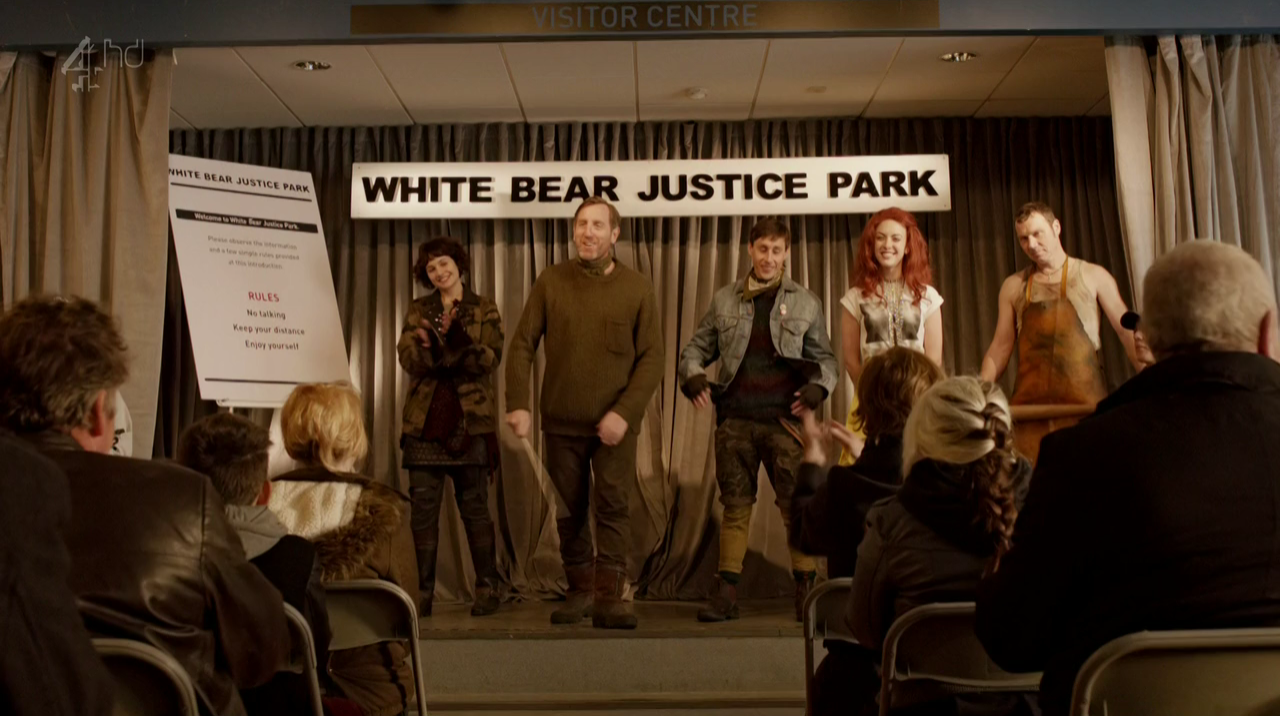
The White Bear episode of Black Mirror presents one of the series’ most unsettling uses of dystopian architecture and spatial manipulation as a tool of punishment. It begins in a decaying, abandoned house, where Victoria awakens with no memory. The dark walls, grimy windows, and scattered objects create an oppressive, alienating atmosphere, heightening her confusion and fear.
As Victoria moves outside, the environment itself becomes part of the punishment: urban spaces are stripped of normal interaction, turning into arenas of surveillance and psychological torture. The journey leads her to White Bear Justice Park, a facility blending prison and theater. Its design, with towering walls, isolated stages, and oversized screens, transforms punishment into a public spectacle. Transparent vehicles and carefully choreographed spaces emphasize constant exposure and humiliation. In White Bear, architecture is not just a backdrop but an active agent of psychological cruelty, shaping Victoria’s endless cycle of punishment.
3. White Christmas

Black Mirror Season 2, Episode 4, White Christmas, stands out as a powerful example of dystopian architectural fiction. The story opens with Joe Potter and Matt Trent inside an isolated, sparsely lit mountain cabin, designed to sever them from the outside world and their pasts. As the narrative unfolds, we discover the snowbound cabin is a simulated digital environment, a mental prison engineered to extract Joe’s confession, trapping him in an endless winter.
Through flashbacks, the episode explores technologies like the Z-Eye, which enables social “blocking,” turning people into blurred, silent figures, a digital architecture of isolation. Matt’s other story introduces the “Cookie,” a sterile, glass-enclosed digital cell where mind-copies endure endless solitude and accelerated time. Ultimately, Joe’s cabin itself is a Cookie prison, blending psychological manipulation with a chilling, fabricated reality.
4. Nosedive
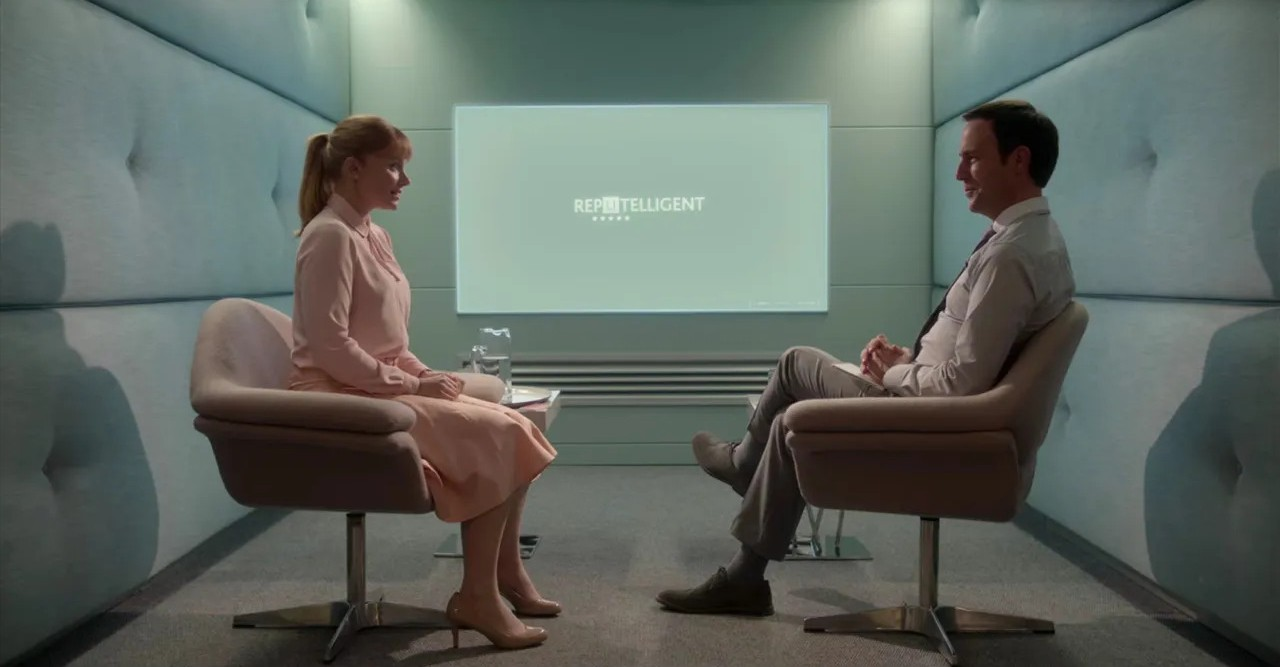
One of the best examples of how dystopian architecture can be shaped by aesthetic illusion and social pressure, the episode Nosedive is the first episode of the third season of the Black Mirror series. Set in a world where every interaction is subject to a social rating system, the episode revolves around the concept that everything is tied to one’s social image. It begins by introducing Lacie, a young woman striving to improve her rating in order to access a better quality of life.
The purpose of the houses, which are designed for living and decorated in a minimal order, with pastel tones of pink, mint green, and powder blue dominating the color palette, is actually to be seen more. Every element in these spaces, designed to be shared on social media, is produced for show. The prevailing aesthetics in the world force everyone to live in a way that will be appreciated, and houses are no longer places to live but to be shared. This same aesthetic and rigid order is evident in Lacie’s workplace, where interactions are also governed by the rating system. Everyone can rate each other, and only those with high scores gain access to luxurious spaces. Thus, architecture serves as a social divider that reinforces class distinctions.
The episode follows Lacie on her journey to attend the wedding of a highly rated childhood friend. As her rating begins to fall due to minor infractions, a cascade of consequences ensues, she is denied air travel, downgraded to a lower-quality rental car, and subjected to further public humiliation that worsens her rating. Lacie, who causes trouble at the wedding and whose social status score has fallen to the bottom, ends up in prison in the final minutes of the episode.

The prison, which represents Lacie’s break from the imposed emphasis on being liked and her inner liberation, is a small gray cell, contrasting with the glamour of the outside world. There is no connection to screens or social media in this cell and its surroundings, where there are no decorative elements. Unlike the digital and expressionist spaces witnessed throughout the episode, Lacie’s cell is a plain and silent place where there is no concern for points. Lacie is now physically imprisoned, but she has been able to stay outside of the digital dystopia and thus has gained her inner freedom.
5. USS Callister

The USS Callister, which was introduced to the audience as the first episode of Black Mirror’s Season 4, is adorned with a resto-futuristic science fiction aesthetic. The episode begins with the introduction of Captain Robert Daly, a flawless space captain, a hero who fights interstellar evil with his crew. However, as the story unfolds, it becomes clear that this is not a real adventure, but rather a digital fantasy world. Daly, who works as a game company technical director at Infinity, a high-tech software company, has stolen the DNA of his colleagues and uploaded them to digital copies in his game called USS Callister. These digital avatars are not just characters; they are conscious beings who can feel pain and die, imprisoned within a digital hellscape.
The office building of the Infinity company consists of concrete-looking surfaces with a heavy gray palette. In this office building, which is devoid of distracting elements and emotional impact, Darly’s room is surrounded by glass that gives a sense of control. The architecture of the spaceship in the USS Callister game, developed by Darly, contrasts with the office. Retro and eye-catching colors such as bright yellow and blue dominate the ship, which is designed to serve a single ego. Shiny metal-covered, illuminated surfaces reduce the sense of reality. The ship’s control center is large and round, and there are no personal areas on the ship, thus eliminating the privacy of the characters. The architecture of the spaceship, where access to the outside world is impossible, is like a cage and a digital prison for the characters.
6. Crocodile

Crocodile, which is featured in Black Mirror Season 4, is one of the heaviest episodes of the series. The protagonist, Mia, resorts to increasingly violent measures to protect her past secrets after covering up a hit-and-run incident years earlier. Mia’s biggest enemy is a technological device that allows people to view and verify their past memories. In the episode that shows how technology can reveal people’s past in all its nakedness, Sonia, an insurance adjuster who uses this technology, and Mia’s paths cross. However, Mia is determined not to reveal her past.

The dystopian architectural spaces created in Crocodile, a demonstration of how the fear of reality that technology can bring about can savage a person, support this idea. Mia’s Icelandic home, the pinnacle of contemporary Scandinavian minimalism, is located in an isolated location with snowy views and far from the city. Constructed from heavy materials such as stone and concrete, this magnificent home has plenty of large windows that show the outside and all the elements.
The house is decorated in neutral colors with clean lines and steel gray cladding. While this secretive and isolated home hides Mia’s crimes, the transparent glass walls become a vulnerability and a potential witness to the crimes that remain hidden. The house, which perfectly captures the contemporary desire for an impressive architectural statement home, reveals character rather than protects it.
7. Black Museum

The final episode of the 4th season of the Black Mirror series, Black Museum, is about how technology, which was developed as a tool and aimed to make our lives easier, can turn into something cruel in the hands of the wrong user. The story is about a character named Nish going to the Black Museum and listening to the stories of the artifacts. The Black Museum, one of the most symbolic examples of dystopian architecture, is seen as a museum, but it is actually a torture site containing technological crime archives; the methods of punishing criminals are integrated into an entertainment industry. Each exhibit in the museum holds a horrifying story of the past.
Positioned as a highway museum, the Black Museum’s exterior is almost like a closed box with no windows. There is no connection between the inside and the outside. The interior, decorated with cold and dark industrial materials such as steel and shiny metal, is dominated by a feeling of emotionlessness. The surfaces of the museum are tactilely harsh, reflecting the chilling nature of the unethical medical experiments it showcases. The ceilings are high, and the display surfaces are quite large in the museum, which can be considered small in volume. The sterile vitrines, which host works that trap consciousness, are illuminated with harsh lights and arranged with the sensitivity of luxury retail spaces.
The museum, where entrance and exit are through a single door, presents a narrative without exits, and the space narrows as the space progresses. The exhibits become darker and more disturbing as visitors walk through increasingly narrow and shadowed corridors. The bright white surfaces gradually give way to industrial backrooms, where the full horror of the stories within the displays unfolds. The metaphor the episode offers about technology is: the mechanisms that display people’s privacy are hidden behind stylish and innocent interfaces.
8. Smithereens

Smithereens, the second episode of Black Mirror’s fifth season, explores the consequences of a life tethered to smartphones. The adventure begins with taxi driver Chris, who lost his fiancée in a traffic accident two years ago because she tried to check the notification on his phone, kidnapping a Smitheerens employee. Smithereens is a social media company that tracks every action of its users. Smithereens’ headquarters are seen to be a tall and modernist building. In this corporate technology center, where there are giant screens at many points, the system operates with algorithms.
Human relations are minimal, and this is reflected in the architecture only as functional standard and emotionless furniture. During the kidnapping, the world Chris navigates in the car is the last remaining truly offline environment in the episode. The space created for Chris, who wants to escape from digital eyes, is a cramped, dark car. While this small space reinforces the claustrophobic atmosphere of the episode, the fact that every move is watched by the police creates a digital siege.
The reason for Chris’s kidnapping of a Smithereens employee is to get in touch with the company’s CEO, Billy Bauer, and hear his apology. Bauer, the CEO of a large technology company, lives in a house far from technology and society, surrounded by nature. The house, located in an uncomfortable void, is a completely transparent space covered with glass. In complete contrast to the gloomy and cramped architecture of the car, Bauer’s house has a meditation area in the center. The space is silent and minimalist, offering an escape from the noise of the digital age. The telephone, Bauer’s only means of connecting with the outside world, is located in the middle of the house, and at the end of the episode, Chris and Bauer have a phone conversation.
9. Beyond The Sea

Beyond The Sea, the third episode of Black Mirror Season 6, explores dystopian architecture by contrasting three distinct spaces: a futuristic villa, a traditional farmhouse, and a sterile spaceship. David’s home, filmed at Casa Axis in Portugal, reflects a vision of organic modernism with its curved forms, natural geometry, and a combination of concrete, metal, and warm wooden interiors. The architecture’s openness, reinforced by large windows and flowing spaces, mirrors David’s artistic, emotional family life, creating an environment that feels natural, futuristic, and deeply human.
In contrast, Cliff’s house embraces traditional rural architecture. A modest, single-story farmhouse with a wide veranda and sprawling garden, it represents simplicity, functionality, and isolation. The house’s design, distant from urban life, reflects Cliff’s more stoic character and longing for stability. While David’s villa emphasizes fluidity and innovation, Cliff’s home clings to the familiar and grounded, highlighting the emotional and philosophical gap between the two men.
Meanwhile, the spaceship reveals the starkest architectural environment: a cramped, metallic capsule stripped of warmth or individuality. Dominated by cold materials, exposed mechanical systems, and sterile white lighting, the spaceship embodies pure functionality and confinement. Unlike the imperfect but human homes on Earth, this modular living unit serves as a constant reminder of the astronauts’ physical entrapment and emotional distance.
Through these contrasting spaces, Beyond The Sea uses architecture to express not only the divide between Earth and space but also the tension between human emotion and technological existence. Gray tones and white light stand out in the capsule, dominated by cold metal surfaces. Every detail inside is measured, and the tight, enclosed architecture of the spaceship reinforces the astronauts’ sense of confinement.
10. Eulogy
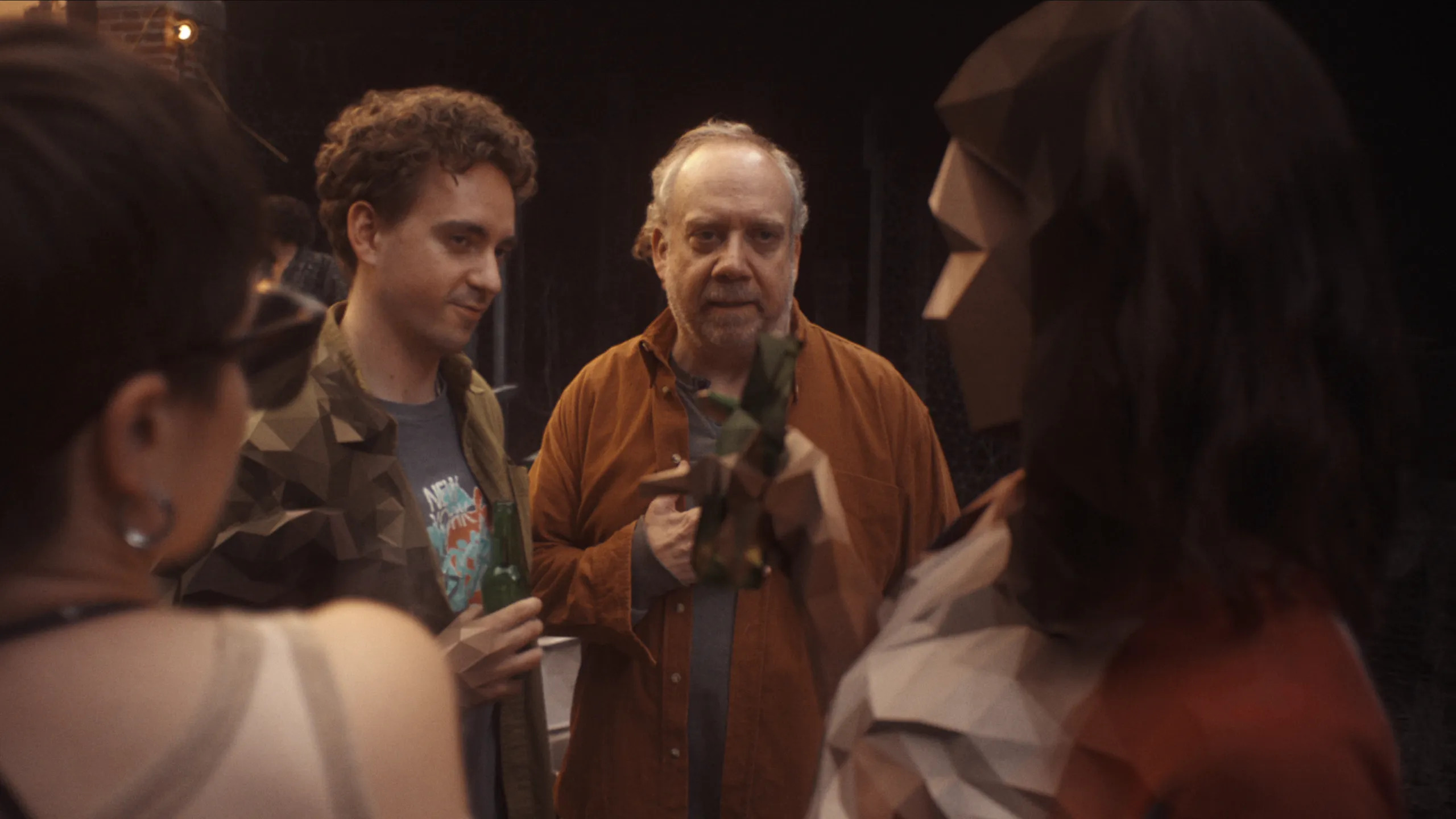
How far can artificial intelligence evolve beyond convenience, and what role could it play in understanding and shaping human emotions? Black Mirror’s fifth episode from its seventh season, Eulogy, directly addresses this question. The episode follows Phillip, an introverted man mourning his wife, Coral, who uses the Eulogy service, a technology that lets individuals digitally relive their memories with the help of an AI guide.
Phillip’s old house in Cape Cod evokes a nostalgic feeling. The architecture of the house seems to support a journey into past memories. It is a house far from the city, intertwined with nature, and a neutral tone palette, such as beige and gray, dominates. The furniture in the interior is functional and orderly. However, it is soulless and impersonal, showing that Phillip is also a spectator to his own life. Philip, who meets Eulogy technology, finds old photographs in the attic.
The attic, which holds tangible examples of suppressed memories, is located on the upper floor of the house and is difficult to access via a narrow staircase. This architectural setup supports the theme of suppressed memories that are hard to reach. With the guidance of the AI “Guide,” Phillip enters the photographs he has chosen and begins to confront his past. The colors in the photographs contrast with the pale tones in real life. Photo memories dominated by more vibrant and nostalgic tones seem to be more beautiful in reality.




























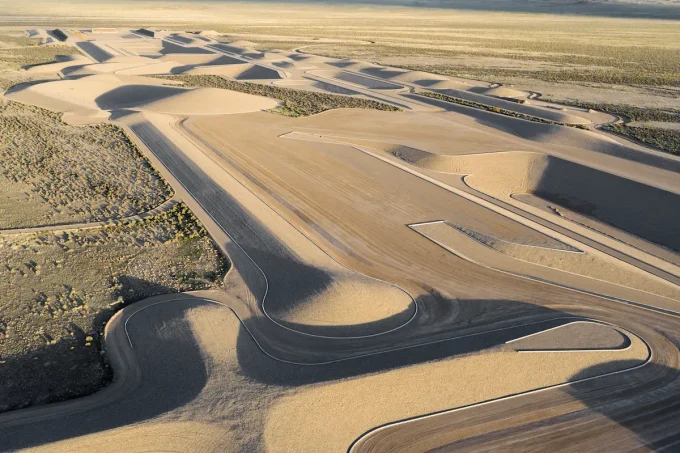





Leave a comment